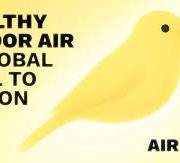Global Pledge for Healthy Indoor Air
We declare, for the first time as a global community, that clean indoor air is a fundamental human right for protecting health and safeguarding well-being. Poor air quality in indoor environments – where populations spend up to 90 percent of their time – contributes to respiratory disease (including
asthma and lung cancer), heart disease, infectious disease transmission, and cognitive impairment, in addition to potential impacts from carcinogens. All people are impacted by poor indoor air quality.
In 2000, a World Health Organization working group concluded „everyone has a right to healthy indoor air”1 and in recent years, both the United Nations (2022)2 and the World Health Organization (2021)3 recognized clean air as a human right. This Global Pledge builds on those pioneering steps
to help galvanize global action explicitly on indoor air quality. Furthermore, the importance of healthy indoor air is recognized in the context of the United Nations’ Sustainable Development Goals (SDGs), particularly SDG 3 (Good Health and Well-Being) and SDG 11 (Sustainable Cities and Communities). Collaboration amongst the broad suite of stakeholders involved in addressing indoor air quality also honors SDG 17 (Partnerships for the Goals).
The 2025 launch of the Global Pledge for Healthy Indoor Air represents a landmark moment, signaling the first international movement to prioritize healthy indoor air for all. We invite governments, non-governmental organizations, cities, universities, schools, healthcare facilities, professional associations, advocacy organizations, businesses, and community groups to join this Pledge. Together, we can build a world where everyone, everywhere, breathes healthy indoor air. Weiterlesen


